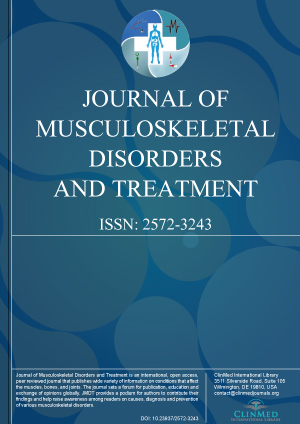Archive
Open Access DOI:10.23937/2572-3243.1510119
A Core Outcome Set for Exercise and Physical Activity Interventions for Musculoskeletal Disorders
Alexander Thompson, Ross Mallett, Tanzila Potia, Deb Harrop, Matthew Kirk and Sionnadh McLean
Article Type: Research Article | First Published: December 30, 2022
Musculoskeletal disorders (MSKD) create a significant burden on individuals and society. Physical activity is an effective way of self-managing MSKD. Global health policy routinely recommends the instigation of management approaches to support people with MSKD to engage in physical activity. However, there is considerable heterogeneity in outcome measurement and establishing whether interventions are effective or not....
Article Formats
- Full Article
- XML
- EPub Reader
Open Access DOI:10.23937/2572-3243.1510118
Niloufar Mohtasham Amiri and Bijan Forogh
Article Type: Original Article | First Published: December 05, 2022
Lateral epicondylitis (LE) is a common cause of elbow pain. Besides conservative treatments, ozone therapy is getting attention due to its safety and effectiveness. This study aimed to assess the effectiveness of ozone therapy in lowering pain and tenderness and improving joint function. Patients clinically diagnosed with LE were included in our study. Baseline assessments including age, gender, involved elbow, tenderness, pain, and function scores were done....
Article Formats
- Full Article
Open Access DOI:10.23937/2572-3243.1510117
Robotically Assisted Total Knee Arthroplasty - Literature Review
Marcus Vinicius Danieli, MD, PhD and João Paulo Fernandes Guerreiro, MD, PhD
Article Type: Literature Review | First Published: October 31, 2022
Despite the evolution in implant design, surgical technique, rehabilitation and better medical training, a great number of patients are not satisfied with the final result of Total Knee Arthroplasty (TKA). The conventional TKA technique could result in a high number of outliers in limb alignment and are related to a high rate of residual symptoms. Robotically assisted (RA) surgery was introduced to improve these results. Recent studies showed this technique is associated to lower costs, better a...
Article Formats
- Full Article
- XML
- EPub Reader

Volume 8
Issue 4
Issue 4
